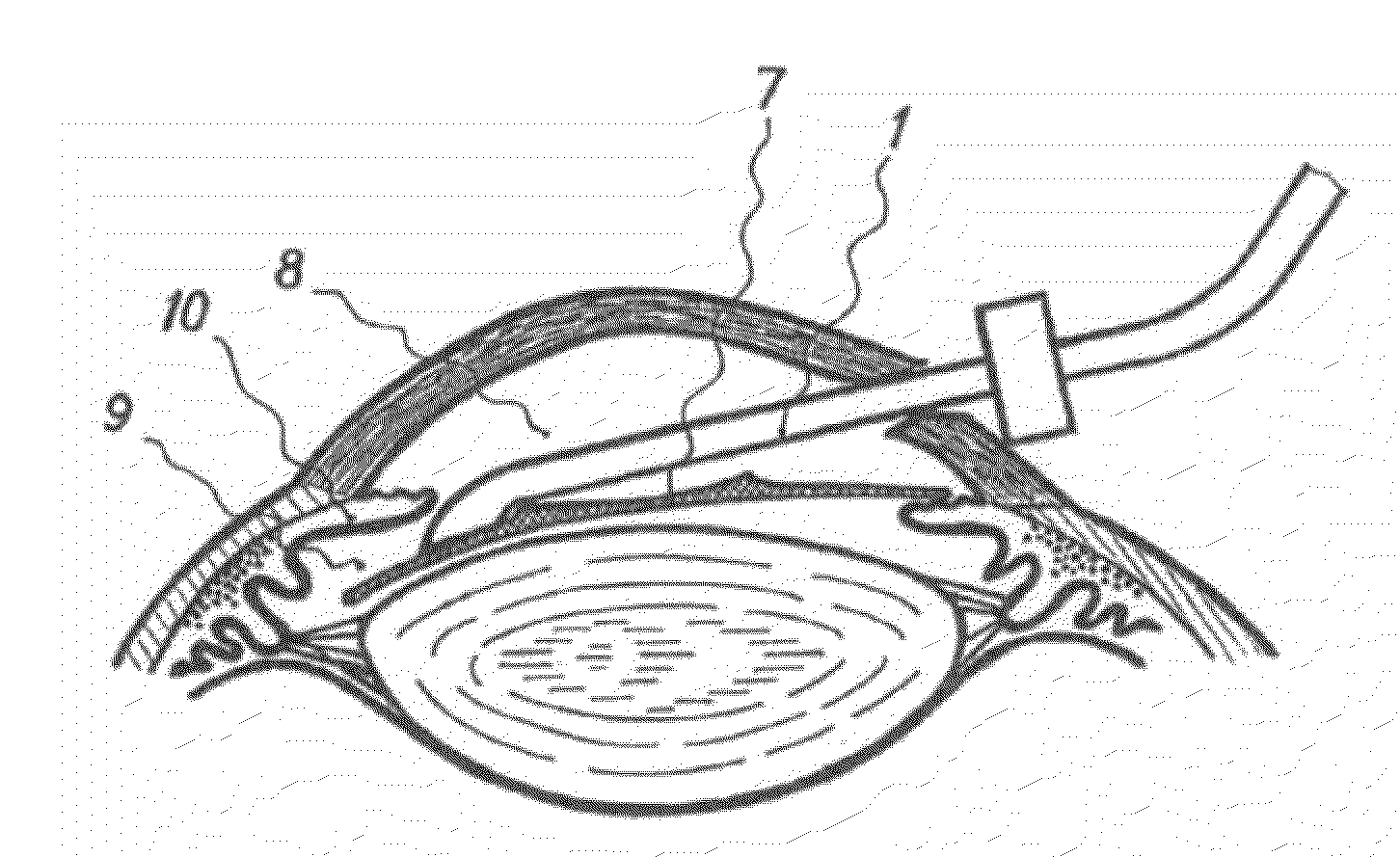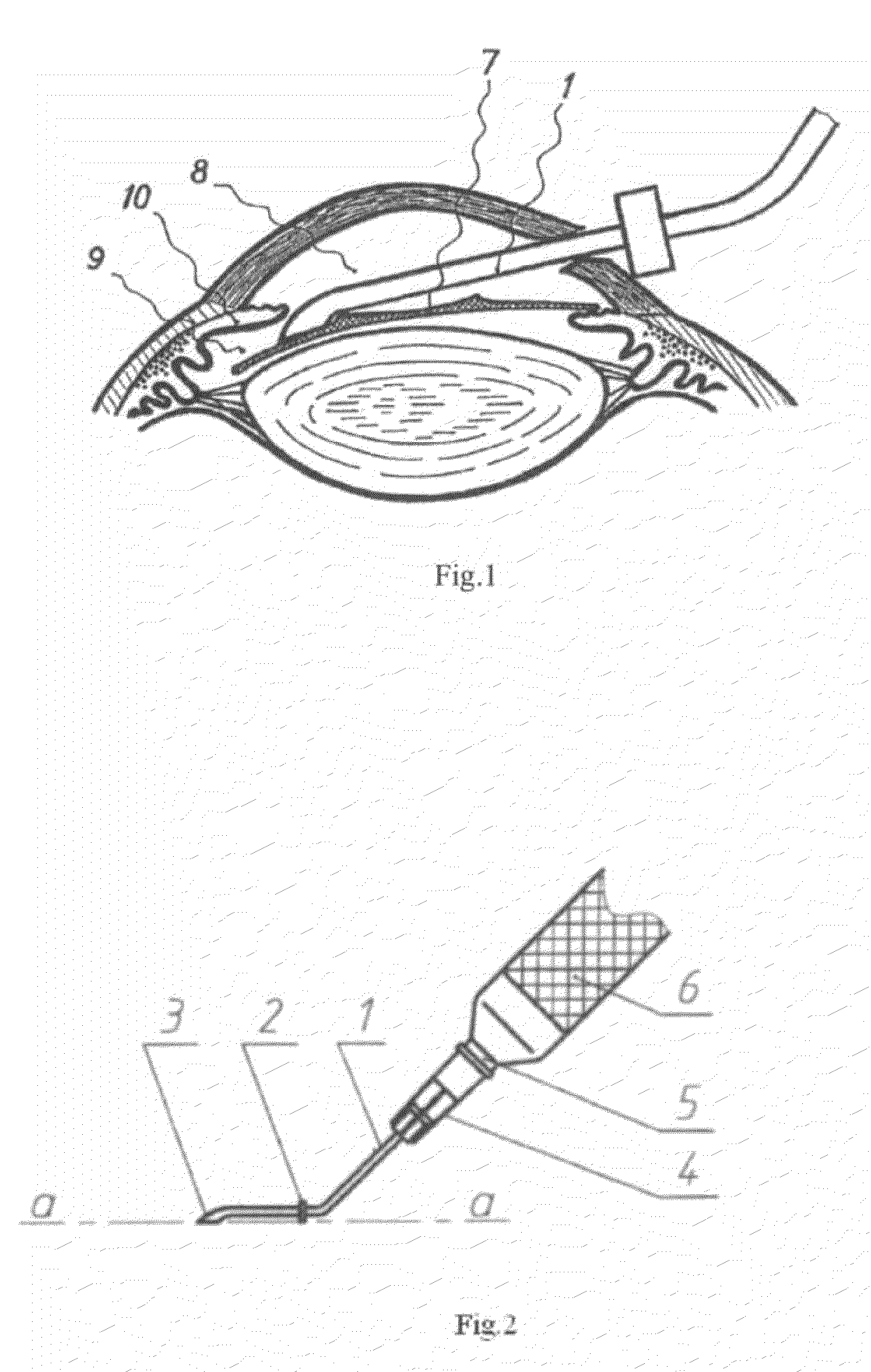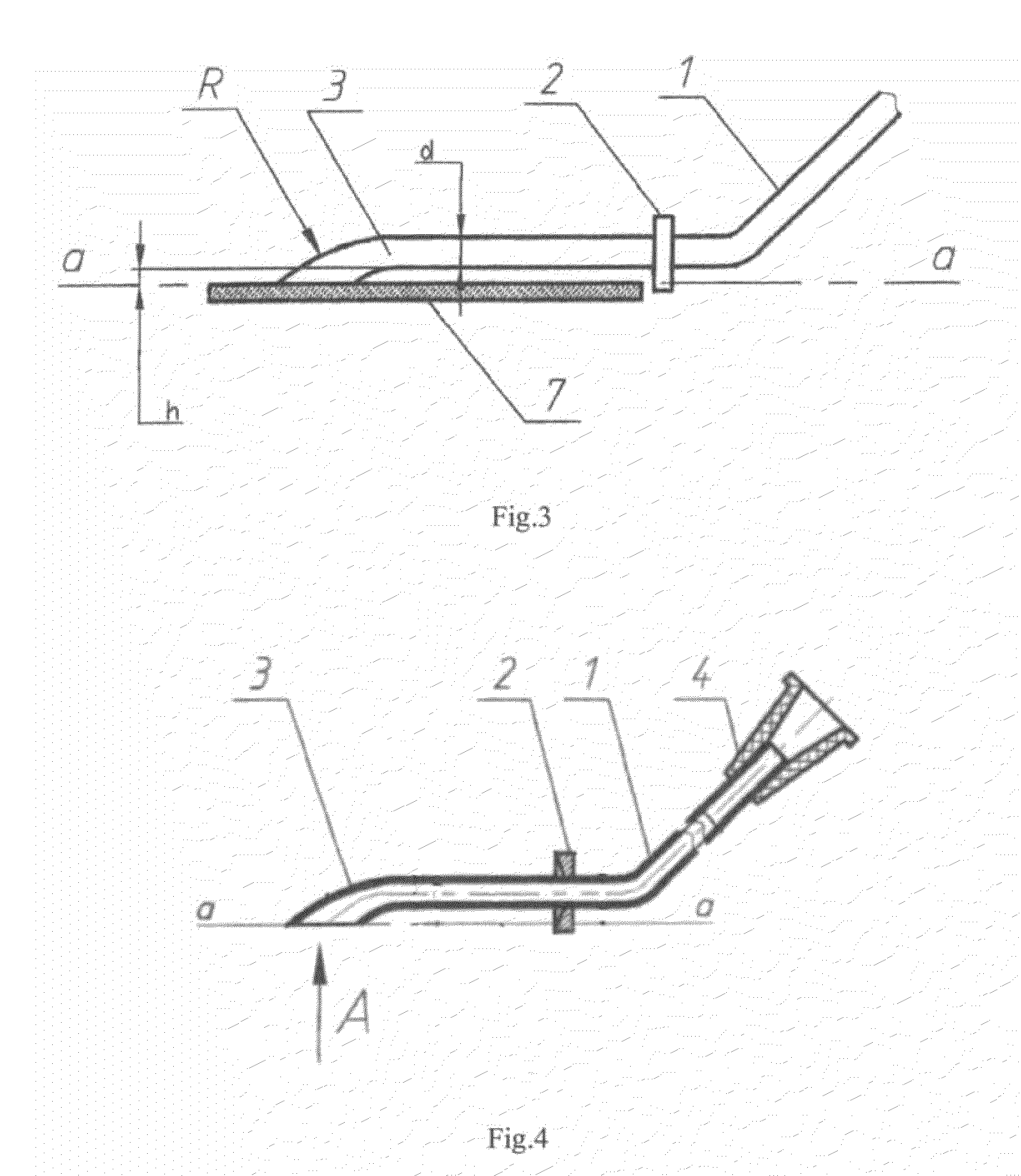Method of Refraction Surgery of the Eye and a Tool for Implanting Intraocular Refractive Lens
a technology for refraction surgery and eye, applied in the field of opthalmologic surgery, can solve the problems of difficult application by many opthalmosurgeons, inability to teach the design of a tool intended for the installation of phakic lenses in the eye, and the inability to implant the refractive phakic lens into the anterior eye, so as to avoid the danger of lens damage, reduce the trauma of both the implanted piol and the surrounding eye tissue, and reduce the operation tim
- Summary
- Abstract
- Description
- Claims
- Application Information
AI Technical Summary
Benefits of technology
Problems solved by technology
Method used
Image
Examples
Embodiment Construction
[0046]The best mode for carrying out the invention is presented in terms of its preferred embodiment, herein depicted within the Figures.
1. Detailed Description of the Figures.
[0047]FIG. 1 shows the overall scheme of operation of the present invention. In conjunction with FIG. 2, the general overview of the device is demonstrated and shows the cannula shaped as a bent tube at an angle of between 110-160. Equipped with a limiter 2, the cannula has a V-shaped working end or face 3 when viewed from the conditional horizontal surface “a-a:. The Cannula is also supplied with a socket 4, established on the air outlet 5 of the handle 6 connected with the vacuum.
[0048]FIG. 3 shows the bend of the working end 3 fixed on the haptic part of the lens 7, at the same time the radius of the bend of the working end is not less than 2 diameters of the tube.
[0049]FIG. 4 demonstrates the design of the cannula; the limiter 2, established at the length 7-14 mm from the working end 3, is made with conica...
PUM
 Login to View More
Login to View More Abstract
Description
Claims
Application Information
 Login to View More
Login to View More - R&D
- Intellectual Property
- Life Sciences
- Materials
- Tech Scout
- Unparalleled Data Quality
- Higher Quality Content
- 60% Fewer Hallucinations
Browse by: Latest US Patents, China's latest patents, Technical Efficacy Thesaurus, Application Domain, Technology Topic, Popular Technical Reports.
© 2025 PatSnap. All rights reserved.Legal|Privacy policy|Modern Slavery Act Transparency Statement|Sitemap|About US| Contact US: help@patsnap.com



